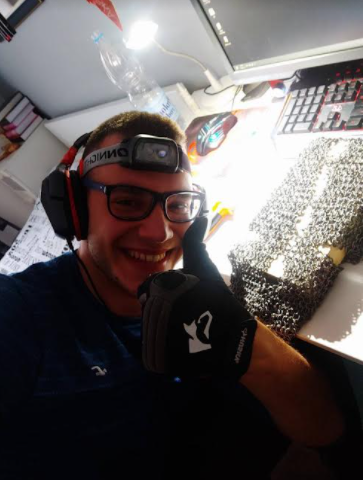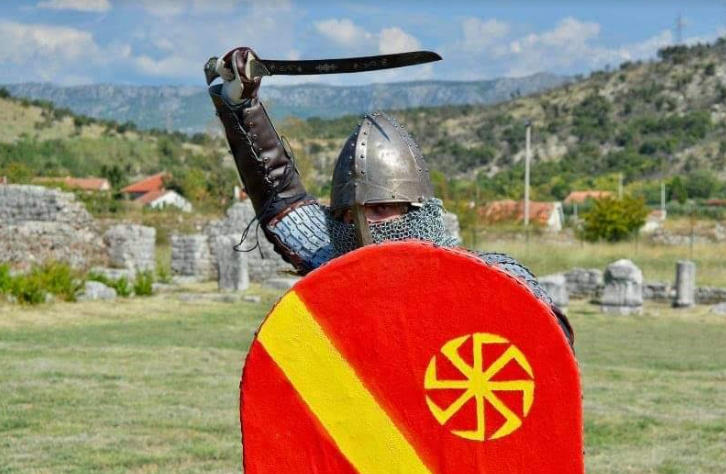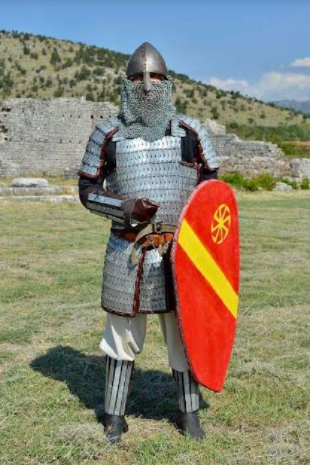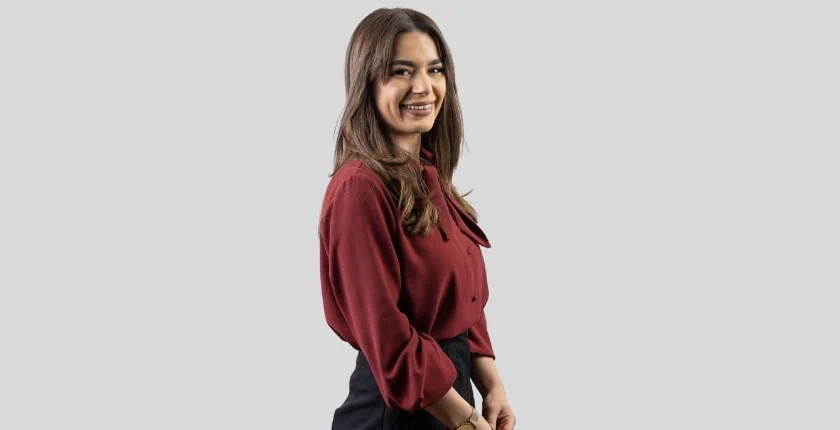“Piece by piece until it becomes armor”. Luka Vušurović’s unusual hobby
Armor - a means of protection that warriors put on their bodies to keep themselves from being wounded in battle. Initially, it was made of leather, rough and simple, and later adapted to the shape of the curves of the human body. Following the development of metallurgy, it began to be made partly or entirely of metal. I talked about armor as a part of war equipment with Luka Vušurović, who is the only one who makes them by hand in Montenegro.
Ever since Vušurović was a kid, he used to “craft armor” out of cardboard, paper, or even legos. Four years ago he started to craft also “real ones” made of metal: “While researching about different types of armor and weaponry, I started wondering how they were made and eventually started making them. I got into military history and realized that I can use my creativity to recreate the things I always read about and saw in history books I felt like I had a much closer connection and a better understanding of what I was learning about and that ultimately caused me to do it as my hobby“ he explains his unusual interest.
The 21-year-old explains that making armor is not an easy process. This is especially because he is producing them only in his bedroom and the materials are expensive and hard to find. To make a single piece of armor he needs some hundred euros and usually has to go to several places to find everything he needs, for example, wires from various warehouses, a leather belt at a shoemaker, different textiles in furniture store. When the armor is finally finished the only profit that he gets, is his own satisfaction and hope that maybe someone will rent the armor for theater, festivals, or similar activities.
When it comes to doing all handmade work, he points out that the process of making a set of armor depends on its type. So far he has tried crafting three different types of armor: maille or chainmail, lamellar, and scale.
For the production of a maille armor, the first step is drawing a wire through a certain tool that would make a piece of metal long and thin, but this step can be skipped nowadays because different kind of wire is easy and cheap to buy, Vušurović tells me. Next, the wire is rolled around a stick or a metal rod which should have a diameter from six to eight millimeters producing a kind of spring. Afterward, this spring has to be cut in half, so that it gets a lot of rings. Each of these rings needs to be heated at its end to be connected. A hole would be punched through the middle of the flattened/connected area, then the small rivets would go through the hole. By using special pliers, it would be rounded at its ends so that they do not fall down. These rings would usually be weaved together in a variety of patterns depending on the region. In Europe the most common ones were “4 in 1” and “6 in 1”: As the name suggests, four or six rings would be linked to one. From there on the rings would keep getting connected until the desired shape and size is achieved.
The second type is lamellar armor which is relatively simple in its construction and made of a couple hundreds of plates - or as they were called “lamellae”. These plates could be of various shapes and sizes but what is characteristic is that they would always have holes punched on the sides and on the top and bottom. Lamellar armor is made by weaving those plates together with lacing (usually made of waxed leather or sometimes even waxed silk if the owner was wealthier). They would be weaved in such a way that they would overlap each plate in a row and overlap the plates under them in an upwards motion. This was done because it was usually used by mounted warriors and would deflect attacks from below. Just as in the case of the maille armor this is done until a vest (torso protection), pauldrons (shoulder protection), or tassets (thigh protection) were completed. Its edges are usually lined with leather.
Finally, Scale armor is made of many small plates or scales. Unlike lamellar and maille, scale armor needs a fabric backing in order to function properly. This could be leather, wool, linen, etc. Scales are most commonly in the shape of an upside-down tombstone. These scales would have two holes punched at the top through which the lacing would sew them onto the fabric. The scale armor, unlike the lamellar, overlaps in a downwards motion which protects against attacks from the top which is why it is made from the bottom up.
Vušurović prefers armors that were used between the 9th and 12th centuries. “It was a period in which armor was still being developed and there were many different types and styles while in the later medieval period it was mostly plate armor with certain regional modifications“, he explains.
The armor accessories depend on many factors such as the region where the armor comes from, its type, and period, as he points out: “Helmets, weapons, and shields are as diverse as the armor itself. I will mention a few types and variations so you can gain an idea of how diverse they are. With helmets, we have spangenhelms, lamenhelms, nasal helmets, skulls, shirts, pallets ... with weapons we have swords, axes, maces, war hammers, long swords, halberds, bards, spears, pike ... and with shields we have scutum, buckles, round shields, dragon shields, pavis shields, heather shields, and many others“.
This student of diplomacy comments that as handguns were perfected during the 16th century, the armor did not last very long after that because a bullet could pierce it. He adds that many people do not actively think about this talent as it's not needed here but it will stay as an almost forgotten relic of the past due to the progress of experimental archeology, historical sports, activities, and as long as museums exist.
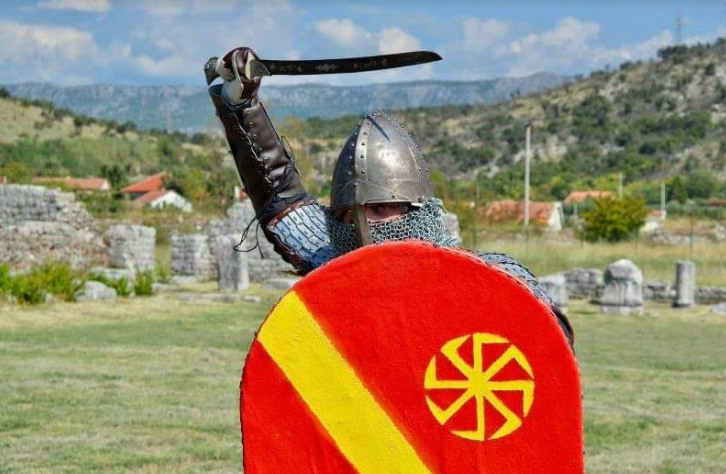
 (1)-1640088310.jpg)
